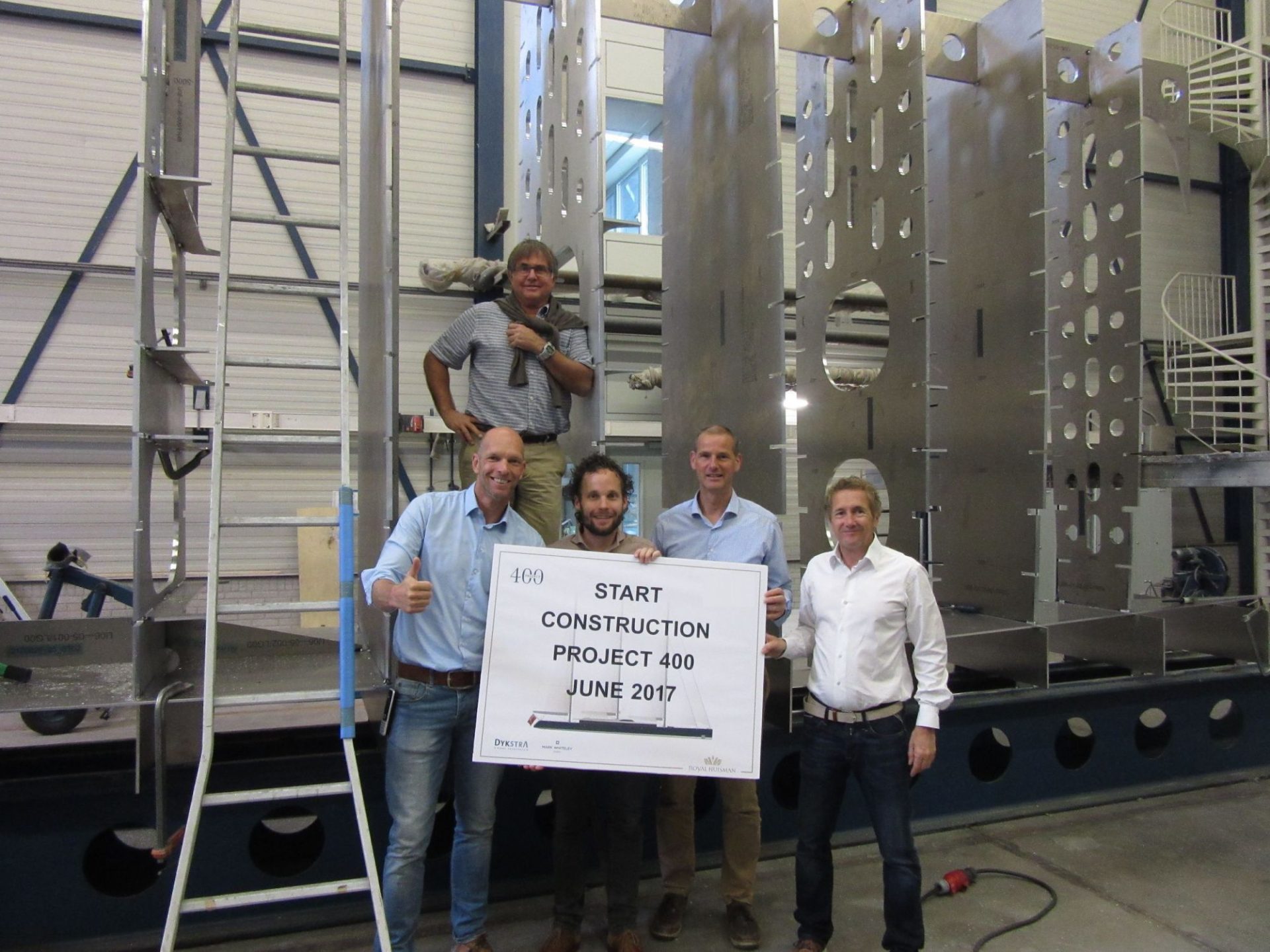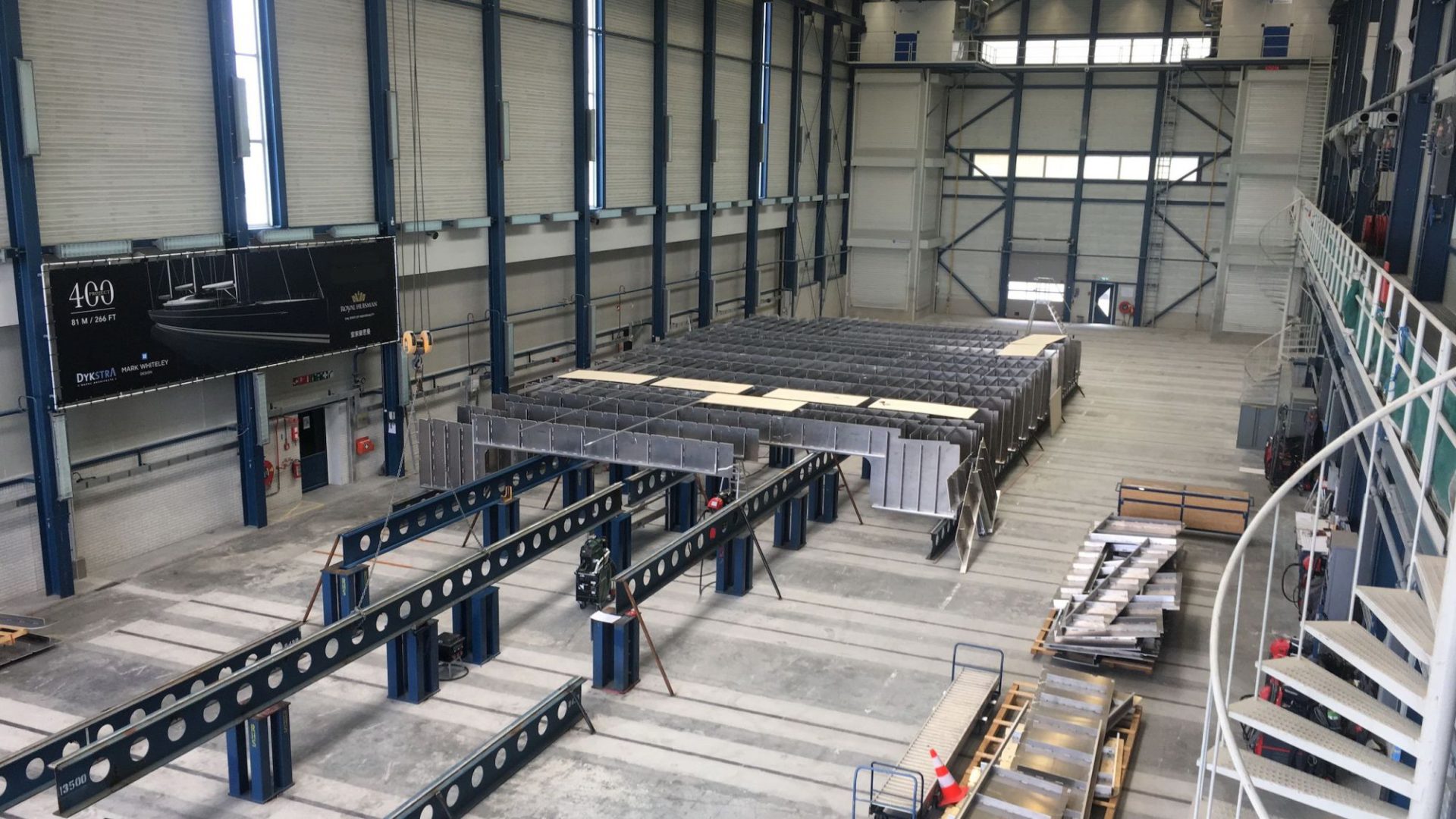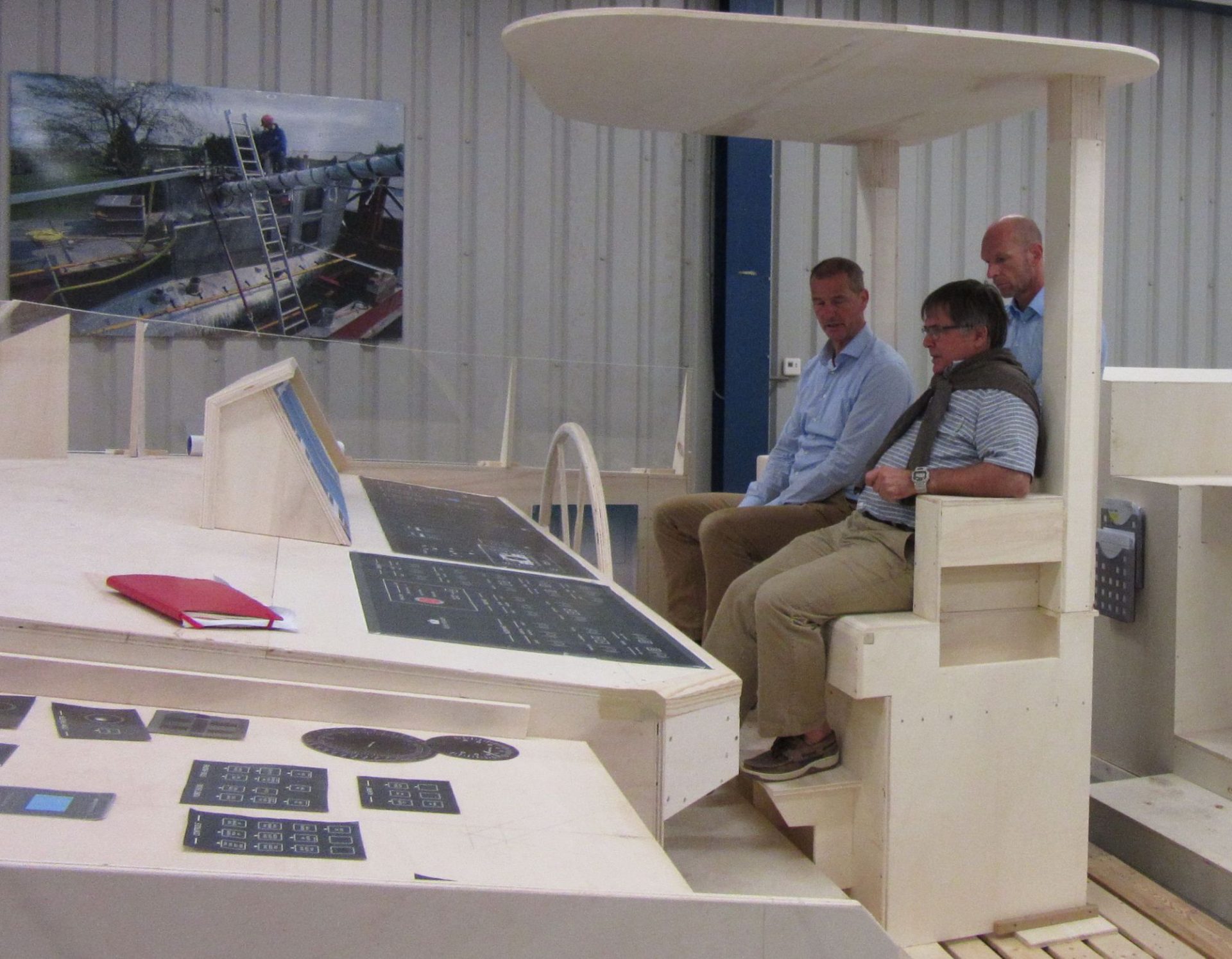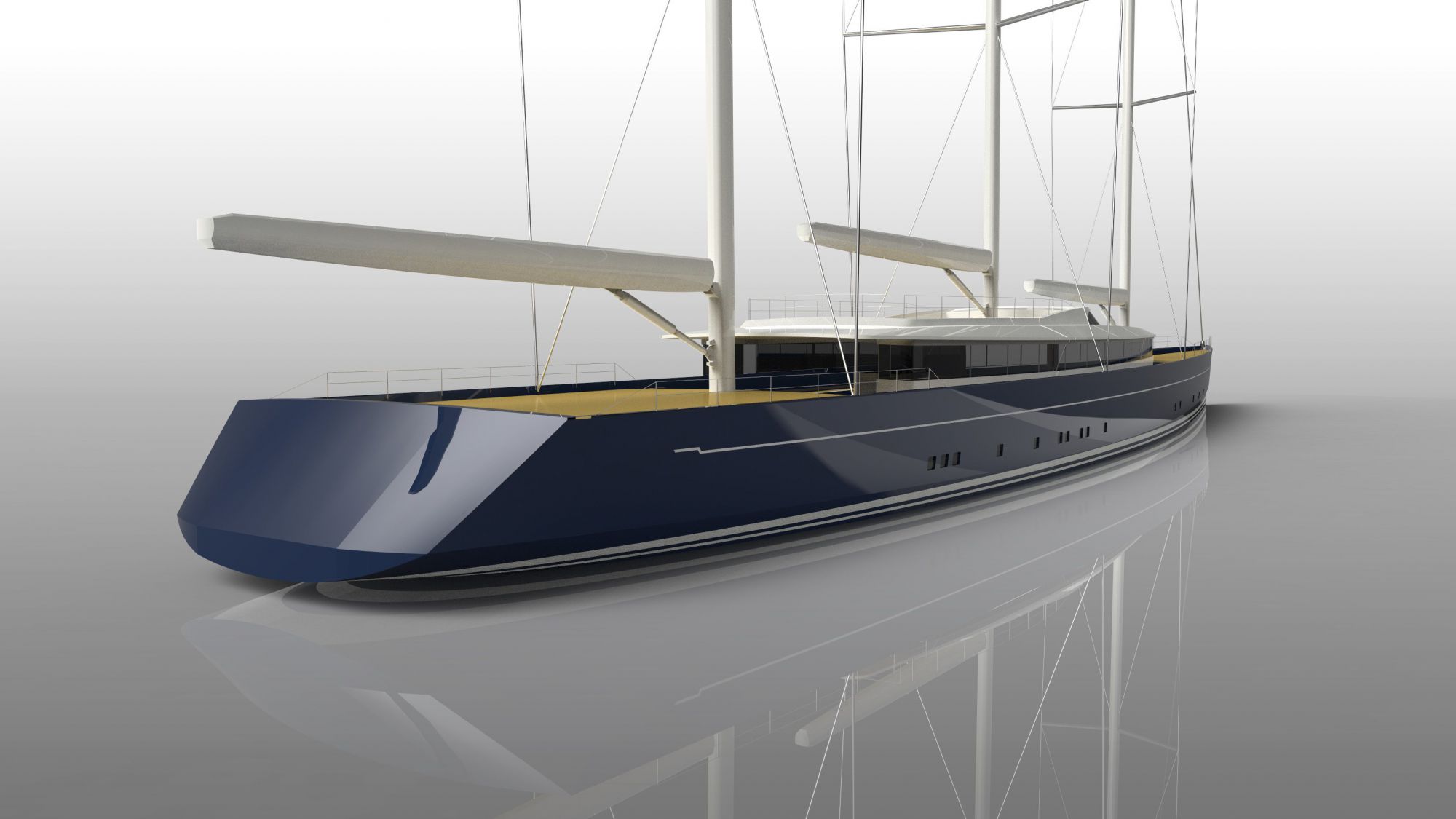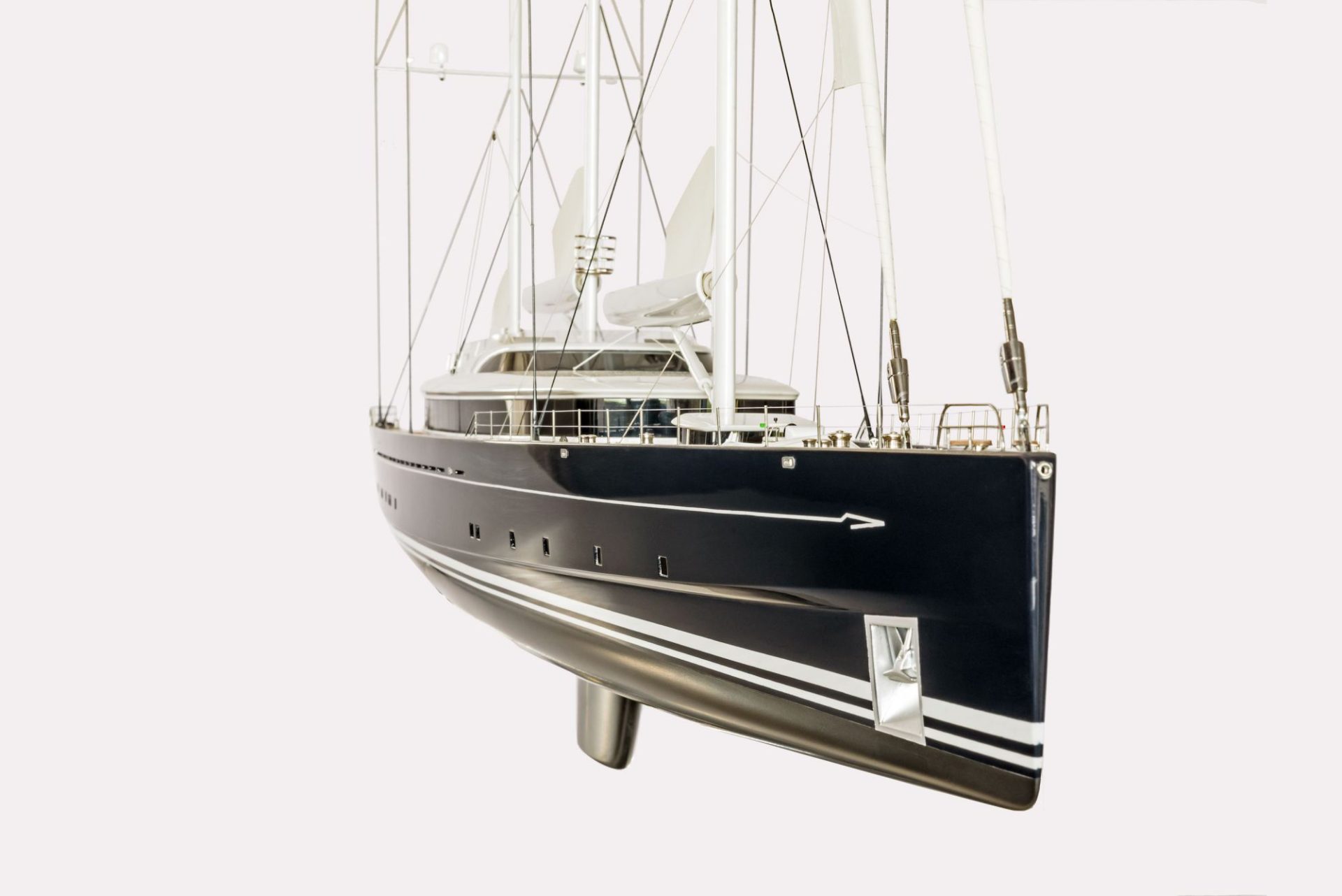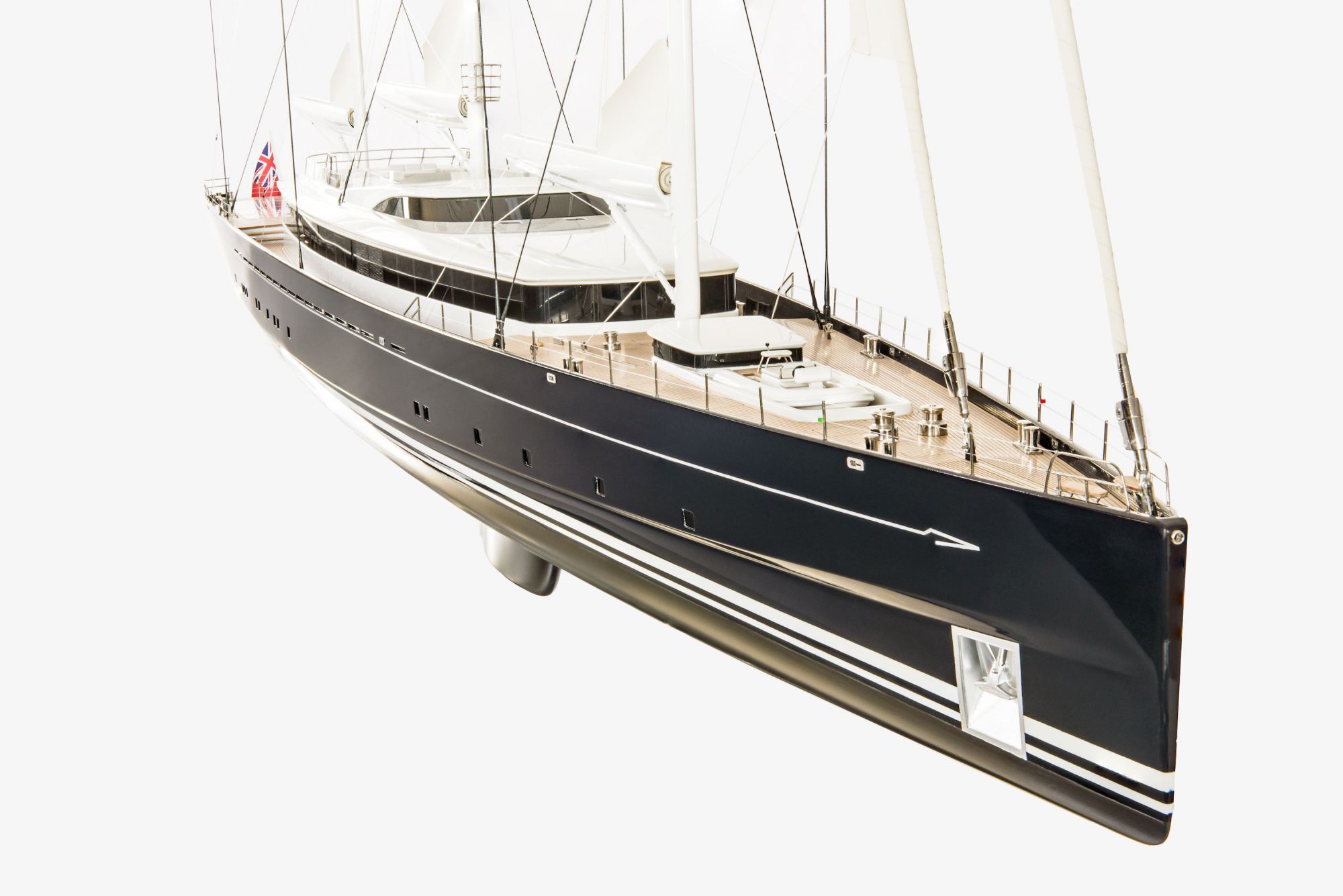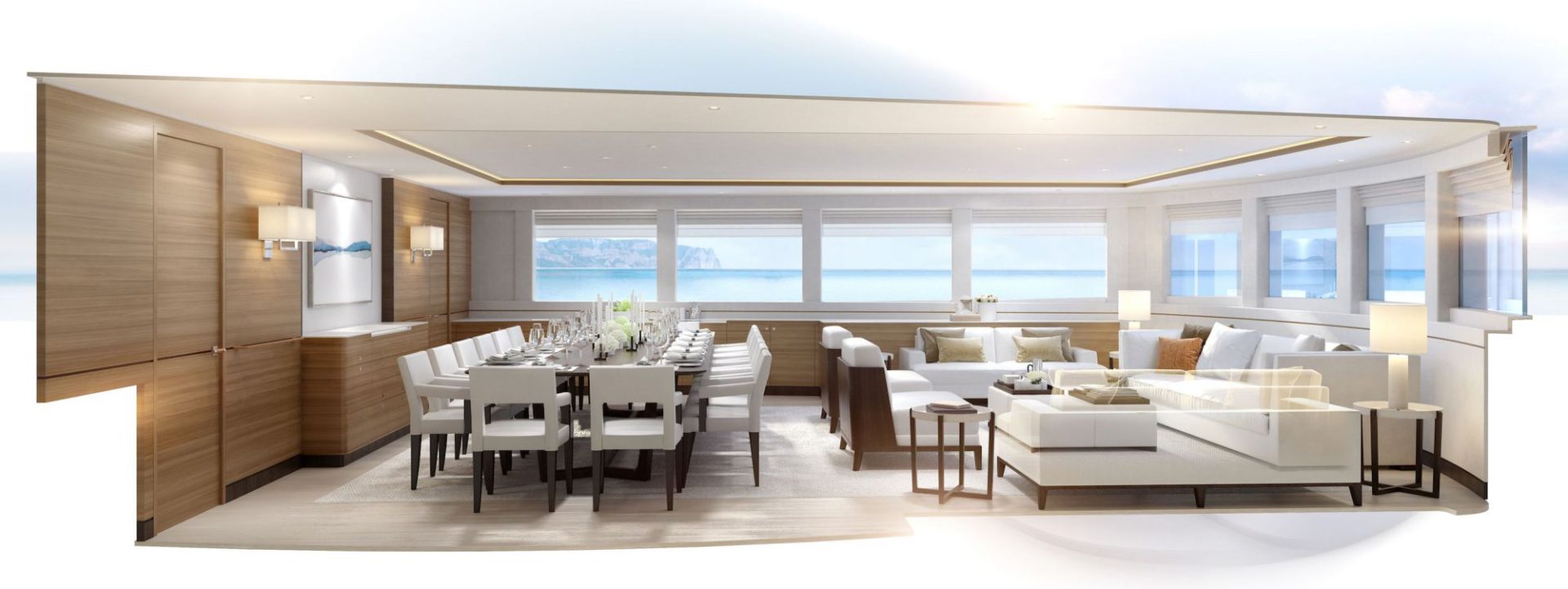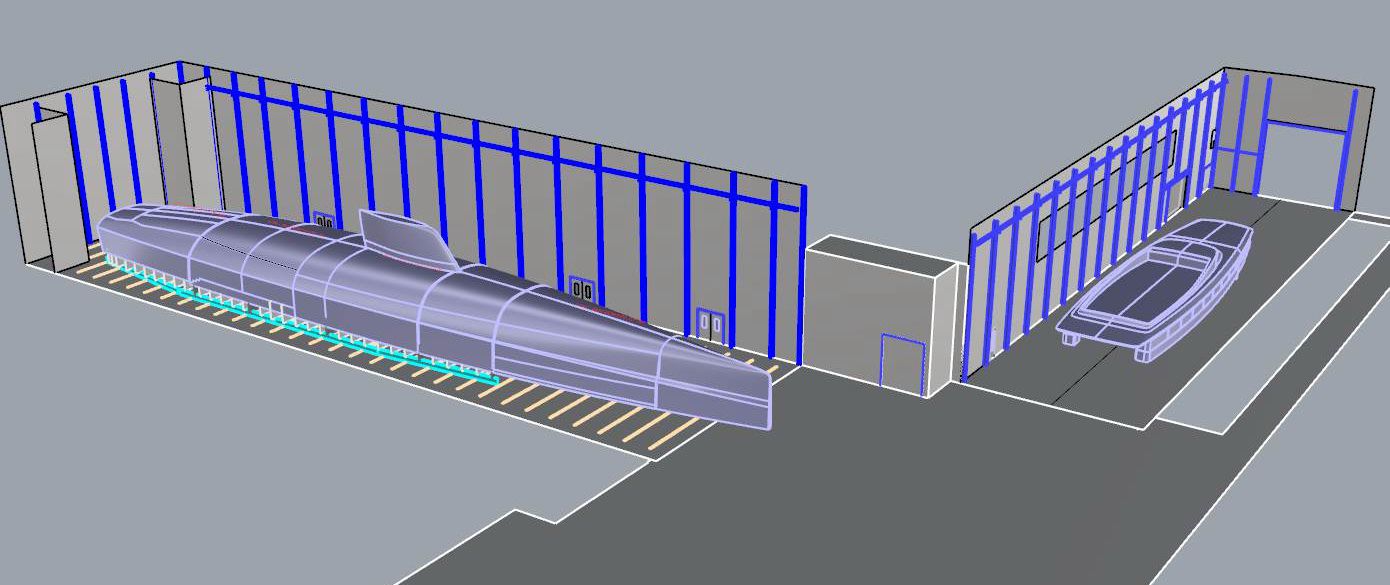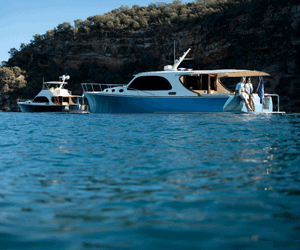Contemporary Schooner gets physical
Construction is now underway at Royal Huisman’s shipyard on the world’s largest aluminium yacht.
Photography by Royal Huisman
13 July 2017
Dutch custom superyacht builder Royal Huisman has announced that construction has started on Project 400, an 81-metre (266 feet), contemporary three-masted schooner which will be the world’s largest aluminium yacht.
The project was unveiled at last year’s Monaco Yacht Show and is expected to be delivered to its client, who is based in Asia, in 2020.
Since September, the project’s design phase, construction planning and most of the engineering has been carried out by Royal Huisman and the project’s other stakeholders.
Last month, the keel of the yacht was laid and construction on the building frame for the main deck was started. Royal Huisman commented that, to prepare for the sizeable superyacht, it has upgraded its largest construction hall in Vollenhove.
The owner’s brief, commented Royal Huisman, was to build a superyacht that could provide world cruising, a speed that is fast yet not compromising on comfort, and an iconic look. The sleek lines, eye-catching superstructure and plumb bow of Project 400 certainly offer the latter, while the technical teams involved hope to assure the first two criteria are met.
Dutch firm Dykstra Naval Architects is working on Project 400’s naval architecture, as well as the exterior styling, alongside Mark Whiteley Design. A half-raised bridge provides sheltered inside steering, while the adjacent bar, lounges and table double as an underway vantage point as well as a superb spot for evening dining with protection from the elements.
Alternatively, the flybridge has a full control suite for outside navigation, with nearby seating for guests looking to feel close to the action while enjoying the breeze in their hair, or a chance to ascend the sizeable main mast in the hydraulic crow’s nest.
The two steering spaces are conveniently connected by the custom-designed sliding Rondal door with individually operated moving glass panels.
The foredeck is awash with innovative features, including a nestled stowage for the crew tender in a “recessed pocket” that doubles as a cockpit when the tender is launched. The crew foredeck entrance has been designed to mirror the look of the main deckhouse, which is unfussy and contemporary, with vertical windows.
As well as exterior styling, Mark Whiteley Design has also provided the interior design work for Project 400, which continues the modern aesthetic throughout. Sustainable Alpi walnut wood will be used on the bulkheads, with oak flooring, to complement the bright neutral tones of the furnishings.
A sizeable portion of the main deck forward has been given over to a combined saloon with lounges for seating as well as a dining table for 16 guests, surrounded by large windows for first-rate views of the surroundings. There will be accommodation for up to 11 guests to sleep onboard, who will be served by a crew of 13.
Dykstra Naval Architects’ work on the technical aspects of the project have focused on providing good performance combined with sea kindliness, stability and comfort. Undertaking towing tests, wind tunnel tests, computational fluid dynamics (CFD) calculations and velocity prediction models, the team is able to evaluate sail balance, keel position and rudder angles when under sail. The result is a distinctive hard chine hull with a carbon schooner rig from Rondal that provides clearance through the Panama Canal, as well as ample living space onboard.
The plumb bow, very long waterline, sleek hull and large sail area will give the yacht the required high speed and good performance,” said Thys Nikkels from Dykstra Naval Architects of Project 400.
A scale model of the Project 400 contemporary schooner will be on display at the Royal Huisman stand (QE14) at the Monaco Yacht Show, held from 27 to 30 September in Port Hercule.




